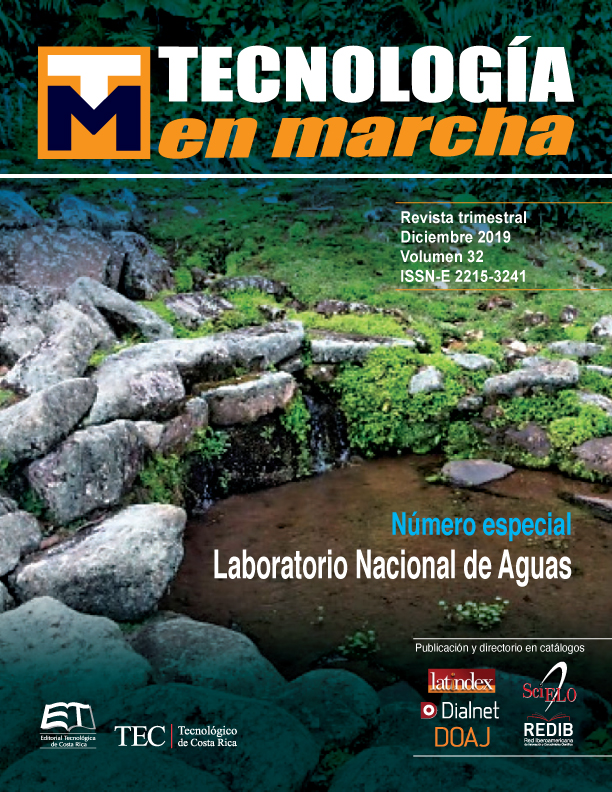Sanitary quality of surface waters in littorals of Costa Rica: situation from 2012 to 2018
Main Article Content
Abstract
The beaches of Costa Rica represent the most important tourism source for coastal zones in the country. Nevertheless, the presence on the beach of surface waters contaminated with fecal indicator bacteria, can suppose a sanitary risk for bathers. In this work, fecal coliforms densities were compiled from 123 bodies of water located in 84 beaches of the Pacific and Caribbean littorals of Costa Rica. The bodies of water were classified according to the Reglamento para la Evaluación y Clasificación de Cuerpos de Agua Superficiales. The results showed that none of the bodies of water was classified as Class 1, a 55% of the bodies of water were classified as Class 2, a 17% as Class 3 and the 11% y 17% were classified as Class 4 and Class 5, respectively. The three most contaminated rivers were detected in Playa Jacó: Anita, Copey y Naranjal. The previous results can be explained by factors like the urban growth; the deficient treatment of residual waters; and the lack of a sanitary sewerage in some communities. There is a clear need to improve the treatment of wastewater in coastal areas in order to cause the least possible impact on seawater and surrounding environments.
Article Details
Los autores conservan los derechos de autor y ceden a la revista el derecho de la primera publicación y pueda editarlo, reproducirlo, distribuirlo, exhibirlo y comunicarlo en el país y en el extranjero mediante medios impresos y electrónicos. Asimismo, asumen el compromiso sobre cualquier litigio o reclamación relacionada con derechos de propiedad intelectual, exonerando de responsabilidad a la Editorial Tecnológica de Costa Rica. Además, se establece que los autores pueden realizar otros acuerdos contractuales independientes y adicionales para la distribución no exclusiva de la versión del artículo publicado en esta revista (p. ej., incluirlo en un repositorio institucional o publicarlo en un libro) siempre que indiquen claramente que el trabajo se publicó por primera vez en esta revista.

